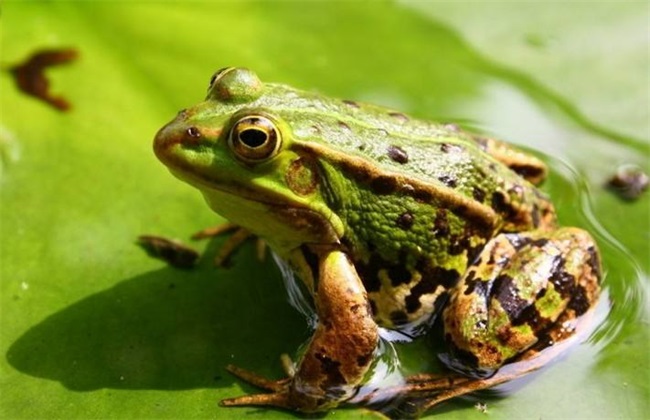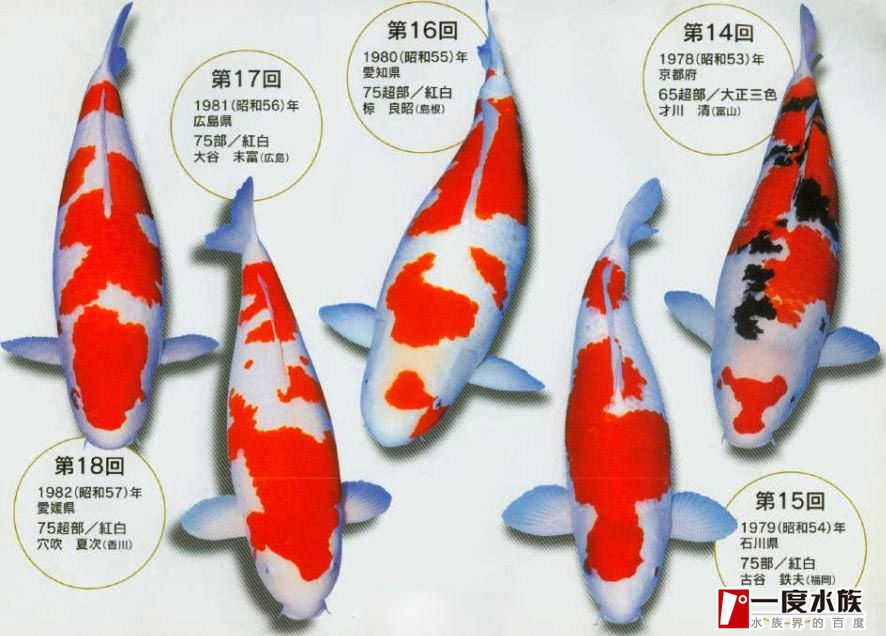What's the problem with the slimness of the koi? here comes the koi. After 14 years, the Japanese koi swam into Ningbo.
Koi is coming | Japanese koi swam into Ningbo after 14 years.
Wow.
So many koi
Go, go.
Is this the first reaction when you see koi?
Don't turn so fast.
Let the editor talk about the koi.
Koi
Brocade carp
Koi is known as the king of ornamental fish in the world. Japanese koi is known as "living art" and "living gem in the water" in Japan. It is Japan's "national fish". Its life span can reach 60-70 years and its body length can reach 1.5 meters. Japanese koi worth hundreds of thousands of yuan can be found everywhere in the auction market. The beauty of Japanese koi is that with the change of age and ambient water temperature, their pattern, color and shape will constantly change, just like the special hand-painted ink painting. In recent years, with the growth of domestic consumer market and the rapid development of leisure fishery, the demand for high-grade ornamental fish is increasing day by day. Japanese koi has become the darling of the market because of its good quality.

At the beginning of the 21st century, the AQSIQ issued a warning notice and suspended the export of Japanese koi to China in 2003 due to the outbreak of koi herpesvirus (KHV) in Japan. In recent years, with the good control of the epidemic situation of koi in Japan, after China's risk assessment, China resumed the import of Japanese koi in 2016. at present, this is the first visit to Ningbo since China lifted the ban on the export of Japanese koi to China.
From 2003 to 2017, but after 14 years.
Please enter the title bcdef
[koi is coming]
On the afternoon of March 22, a special car carrying 11 Japanese koi arrived at Guobin carp farm in Ningbo. In the early morning of the same day, they were airlifted from Tokyo Haneda Airport to Shanghai Pudong Airport and then quickly transported by land to Ningbo.
A total of 11 Japanese koi are imported this time, with an age of about 2 years and a body length of about 60 centimeters. They belong to the "juvenile" stage, with an average price of 400 US dollars. Only nine of these koi are used for introduction and breeding, and the other two are "sentinel fish" with special status, that is, fish used to monitor the growing environment and epidemic diseases.
Please enter the title abcdefg
The way the brocade carp came in is like this.
In order to welcome the arrival of the "nobles in the water", the AQSIQ specially organized an assessment team at the end of last year to conduct an on-the-spot assessment of the Ningbo Guobin koi isolation and quarantine farm to ensure that the software and hardware facilities and environmental hygiene conditions met the requirements of the koi isolation and quarantine, to train the relevant staff of the quarantine field on the basic knowledge of entry animal isolation and quarantine, and to guide the quarantine field to carry out various preparations such as quarantine and disinfection, feed equipment, and so on. After a comprehensive assessment, the Ningbo Guobin koi quarantine farm has been identified as a special quarantine farm for imported Japanese koi, and it is one of the only two special quarantine farms for imported Japanese koi in China.
Please enter the title abcdefg
Everything is ready.
Just wait for koi.
Let's take a look at how it is quarantined.
1 do the quarantine inspection before entering the pool
Check the goods information
Unpacking into the pool
With the arrival of the special transport vehicle, the inspection and quarantine personnel first check the relevant information on the outer package, carefully check the name, origin, source farm approval number and so on. Then open the box to check whether there is air leakage in their packaging, preliminarily judge the health status of each fish in the package, check whether they swim abnormally, whether there are ulcers, bleeding, cysts and parasitic infections on their body surface, and whether their body color is abnormal. whether there is swelling in the abdomen of fish, redness and swelling of the anus, and so on.
two
Supervise the disinfection of fish
Water temperature balance
Unpack
Fish disinfection
After the water temperature was balanced, the staff opened the plastic bag, fished the koi out of the plastic bag and quickly put the koi into a large basin prepared nearby, and put a small amount of potassium permanganate into the basin to help them disinfect and sterilize, and only after 3 minutes did the koi get in and out of the pond. Only in this way can the koi really enter their new home.
three
Supervise transportation packaging and disinfection treatment of waste water
After all the koi entered the pond, the inspection and quarantine personnel and supervision enterprises immediately carried out harmless treatment of the plastic bags used for transporting the koi, the means of transport, the water brought by Japan and the water just used for disinfection, so as to ensure the hygiene and safety of these articles and waste water.
four
Do a good job in epidemic surveillance
These koi are still under the close attention of the inspection and quarantine staff for the next 30 days, and the inspection and quarantine personnel still need to supervise their diet and daily life, and pay attention to their breeders, bait, water hygiene and health conditions.
In accordance with the regulations of the International Code on Aquatic Animal Health of the World Organization for Animal Health and the General Administration of quality Inspection and Quarantine, inspection and quarantine personnel will sample and detect the relevant epidemic diseases, so as to ensure that the introduced koi are safe and healthy aquatic animals, and strictly prevent the epidemic from spreading into China.
Q
A
Buddy
Someone wants to raise koi.
My little friend.
Inspector
Someone who answers a question.
My little brother.
Buddy
Brother, I want to import Japanese koi, how to do it?
Inspector
The import of koi must go through the "three hurdles"
Guide to the Import of Koi from Japan
No.1 registration. Japanese farms must be registered with China's General Administration of quality Supervision, Inspection and Quarantine. So far, only six Japanese farms have registered with China, and only the koi from these farms are eligible to enter China.
No.2 quarantine examination and approval. Koi must apply to the AQSIQ for a quarantine permit before it is imported, and only after obtaining the certificate can it enter the country smoothly.
No.3 quarantine. Koi who arrive in China must enter the designated isolation and quarantine farm, pass the 30-day quarantine period, and finally enter the designated farm. After a monitoring cycle with appropriate natural water temperature, it is true that there is no epidemic before they are allowed to sell.
Buddy
I see. I have one more question.
Buddy
Ahem. Was it good?
Inspector
…… Huh?
Contribution for this issue: Huang Bin, Yinzhou Bureau, Shu Linjun, Tangtop Animal planting Office, Yongcheng Office.
Editor of this issue: Wang Sihong
.
- Prev

Environmental requirements for Rana nigromaculata culture
Environmental requirements for Rana nigromaculata culture
- Next

Koi are lying at the bottom of the fish tank, Lin big koi, you deserve to have!
On the afternoon of May 29, the gurgling water and rippling waves of the lake in the center of our school, teachers and students gathered on the lakeside. The donation ceremony of Mengyin Yunmeng Lake Fisheries Co., Ltd. led by the School of Media was held here. The company donated more than 10,000 koi to our school free of charge.
Related
- On the eggshell is a badge full of pride. British Poultry Egg Market and Consumer observation
- British study: 72% of Britons are willing to buy native eggs raised by insects
- Guidelines for friendly egg production revised the increase of space in chicken sheds can not be forced to change feathers and lay eggs.
- Risk of delay in customs clearance Australia suspends lobster exports to China
- Pig semen-the Vector of virus Transmission (4)
- Pig semen-the Vector of virus Transmission (3)
- Five common causes of difficult control of classical swine fever in clinic and their countermeasures
- Foot-and-mouth disease is the most effective way to prevent it!
- PED is the number one killer of piglets and has to be guarded against in autumn and winter.
- What is "yellow fat pig"? Have you ever heard the pig collector talk about "yellow fat pig"?

